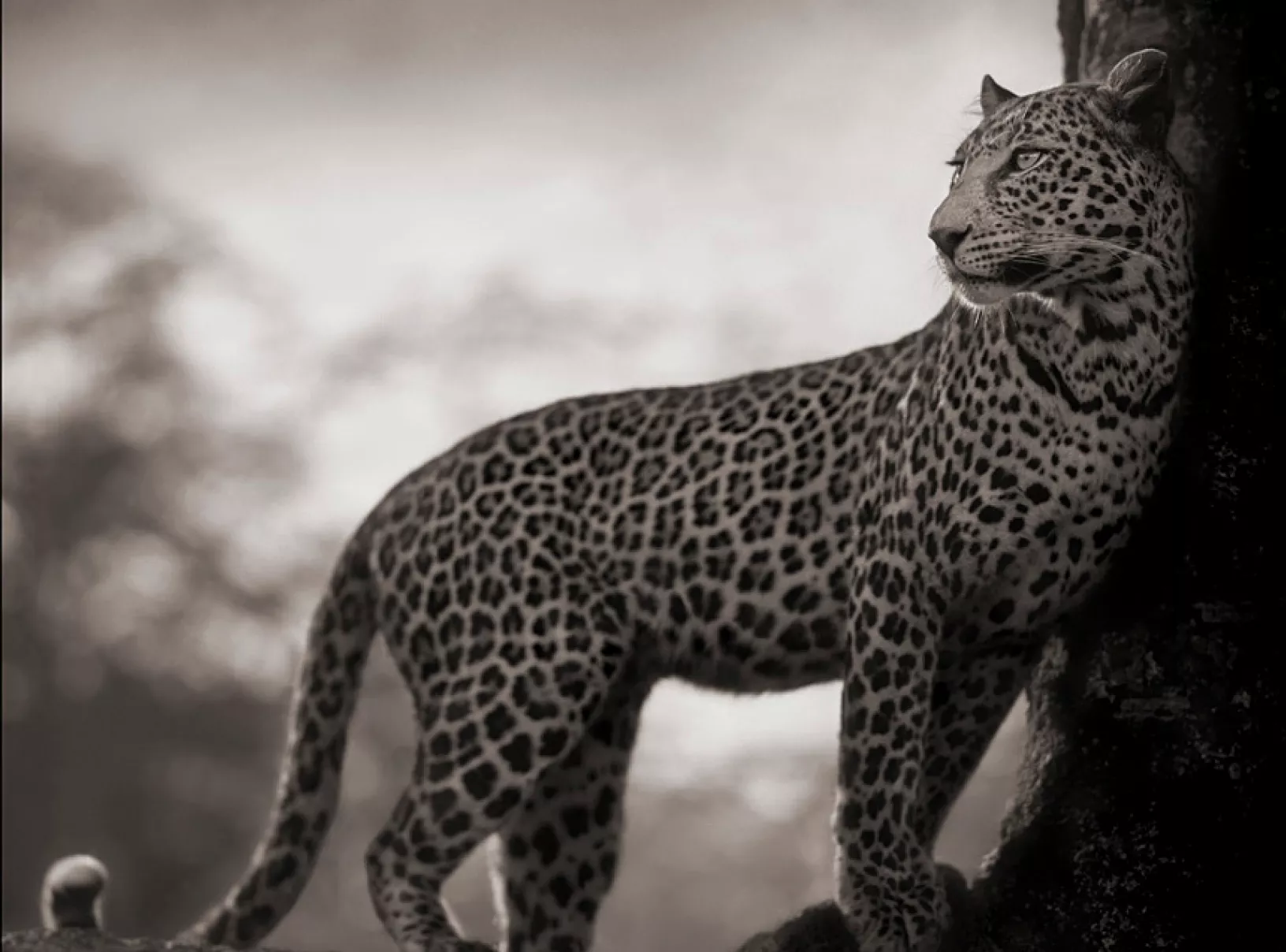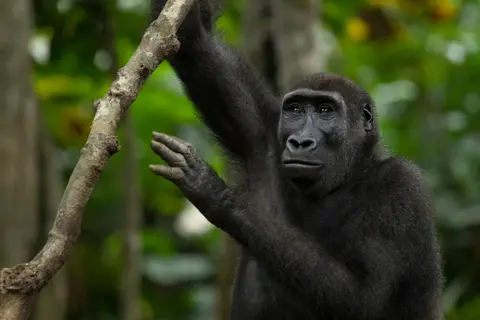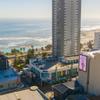The trek to see the Western Lowland Gorillas is unlike any other.
You will be given a full briefing the night before your trek by the research team. In the morning, before dawn, you walk directly from your room at Ngaga into the heart of the forest, forging an immediate connection with the wild. You are accompanied at all times by your tracker and guide. You will not feel like a tourist on this trek, but more like you are going on a walk with the research team. The silence is broken only by the chirping of insects and the crunching of shoes.
The terrain is relatively flat, and the trackers lead the way, cutting through the Marantaceae, the dense plant that fills the forest around the camp. The humidity in the rainforest is palpable, but it’s not a strenuous sweat-inducing trek.
The forest is divided into routes, with parallel and vertical grid systems, and paths you walk along at first and then into denser forest. The typical trek takes 30 to 45 minutes to find the gorillas and an hour to spend with them. Walks range from 1 to 8 km over undulating terrain.
First, you will find the nesting site, where the gorilla family spent the previous night. From here, the trekking to find the family starts in earnest. We call it trekking, but is a slow, comfortable walk, we can’t even call it hiking.
The expert trackers rely on leaf patterns and natural signs to locate the gorillas, and they communicate with them by cutting vegetation with secateurs, a sound that lets the gorillas know that humans are approaching.
The Western lowland gorillas are known for their high activity levels, making them even more engaging to observe than the Mountain gorillas. This region boasts a 70% active to 30% resting ratio, which means you’re more likely to witness lively family interactions.
Once you reach a Gorilla Family, you will don your face mask (compulsory to ensure the gorillas are not affected by any diseases carried by humans), you will be led in and out and back again into the sighting, spending a total of 1 hour with them. You will be led slightly out by your tracker, and then back in closer for a different angle, until you have spent your allotted hour with the family.
































